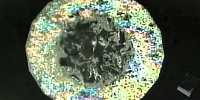European scientists have begun work on an innovative proposal to forecast the future of climate change: restoring a simulated version of the Planet as a whole that can be used for various scenarios. To become climate stable by 2050, the European Union has initiated two ambitious programs: the Green Deal and the Digital Policy.
Scientists are developing a highly precise computer simulation of the Earth to provide credible knowledge on extreme weather and climate change. As a core component of their successful execution, climate scientists and computer scientists have initiated the Destination Earth project, which will begin in mid-2021 and is planned to continue for up to 10 years. During this century, a highly detailed global model of the Planet, a digital twin of the Earth, is to be developed to chart climate development and extreme events as precisely as possible in space and time.
A digital twin of our planet is being designed to simulate Earth’s climate system reaching into the future. It is a tool to support policy makers in taking appropriate measures to better prepare for extreme events.
The “digital twin” of the Earth, as described in the research published this month in the journal Nature Climate Change, is supposed to function as a kind of sandbox that will allow scientists to analyze the impacts of different climate policies and other variables when they are completed. By having reliable climate and weather statistics—as well as data on human activities—researchers aim to help us work out what will and will not help to save the atmosphere and reduce global climate change.

Destination Earth
The futuristic planet is part of the European Union’s 10-year Destination Earth programme. The ultimate aim is to set a course of action that will allow Europe to reach net carbon neutrality by 2050, according to the ETH Zurich press release on the programme, so that the impacts of various strategies can be modeled a long way.
“If you’re planning a two-metre-high dike in the Netherlands, for example, I can monitor the data in my digital twin and verify if the dike will possibly still defend against predicted extreme events in 2050,” Peter Bauer, co-initiator of Destination Earth and Deputy Director of Research at the European Center for Medium-Range Weather Forecasting, said in a press release.
Under Construction
Scientists behind Destination Planet refer to decades of progress in weather and climate modeling as evidence that the project could succeed.
But they also state that they would need to work closely with computer scientists and engineers to create a model capable of anything they expect it to be able to do, according to a paper published Monday in the journal Nature Computational Science, because constructing such a complex simulation needs specialized equipment and maybe even supercomputers that are more advanced than what exists.
Profiting from artificial intelligence
The writers still see tremendous potential for artificial intelligence (AI). For example, data assimilation or processing of observation data, representation of unknown physical processes in models and data compression may be used. Thus, AI makes it easy to speed up the calculations and sort out the most interesting information from vast quantities of data. In addition, researchers believe that the use of machine learning not only makes simulations more accurate, but can also help to better explain physical processes.
Scientists see their policy paper as a starting point on the road to the Earth’s digital twin. Among the computer architectures available today and anticipated in the near future, GPU-based supercomputers tend to be the most promising choice. Researchers predict that running a full-scale digital twin would entail a machine with approximately 20,000 GPUs, which consumes an estimated 20MW of electricity. For both economic and environmental purposes, such a machine should be run at a place where adequate quantities of CO2-neutral generated electricity are usable.
















